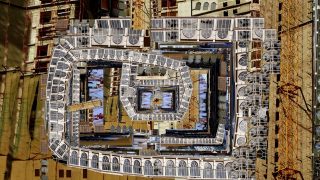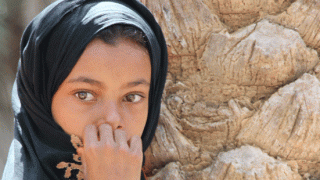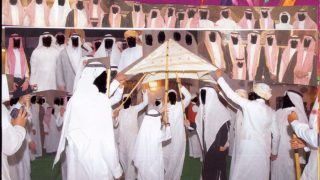On March 1, news was released that Saudi security forces had arrested 176 people, including 15 women and a number of children, for protesting outside the Bureau of Investigation and Prosecution in the city of Buraidah. Demonstrators were gathered to demand the release of detainees who have been held for years without charge, and in some cases after their full sentence had been served. The new arrests, however, did not deter prisoners’ relatives from gathering and protesting again outside the office of the ombudsman, the central prison and the headquarters of the Bureau of Investigation and Prosecution.
The protests in Buraidah were the latest in a string of sporadic and heightened demonstrations that have been staged during the past two years in different cities of the kingdom — Qatif in the east, Jeddah in the west, Hafar al-Batin to the north, and Abha and Najran to the south, in addition to the capital, Riyadh. These protests, which have different motives and come in many forms, are delivering a severe blow to the Saudi media machine and its advocates in the Arab world. Although the popular movement in the kingdom has been depicted as part of an Iranian conspiracy against Saudi Arabia, this mantra became useless when demonstrations broke the barrier of Shiite cities in the east and north and spread widely.
Needless to say, these protests will not cause the Saudi regime to fall. The royal family has monopolized all forms of power, including the disbursement of oil revenues, which will render it able to withstand intense pressure for a long time. Nevertheless, the geographical and social expansion of protests will cause the regime to reconsider a number of keystones from which it draws its legitimacy. These keystones have ensured its stability despite the revolutions, regional wars and internal armed conflicts that have blighted the kingdom’s neighboring countries.
Military-security keystone
The first keystone is the military and security capacity that has been portrayed in the official Saudi rhetoric for the past three decades; it also was a tool used by [Saudi Arabia’s first monarch] Abdul Aziz Bin Saud to unify the Arabian Peninsula. The military keystone comprises the armed forces and the National Guard, which have proved efficient in quelling any opposition movements. Also ensuring the government’s stability are the security agencies and their branches that Saudi authorities use to subdue opposition, or those whose loyalty is suspected. But this keystone has been shaken by a series of clashes between security forces and the supporters of al-Qaeda and other extremist Islamic organizations.
Despite the substantial experience of the security agencies, they have been unable over the past two years to adopt preventive measures to impede the passage of the Arab revolutions into Saudi Arabia’s cities and countryside. The security agencies have been preoccupied with the conflicts with what the Saudi official media call the “deviant class,” and because they espouse the policy of “striking with an iron fist,” they have been incapable of catching up with the changes that have been taking place in Saudi society over the past two decades. The information revolution has opened up new horizons to marginalized segments — such as women, youths and residents of remote areas — to participate. Therefore, the walls of imposed isolation on these classes, because of gender or geography, have been leaped over.
Religious keystone
The second keystone is the legitimacy that derives from the alliance between the royal family and the religious and Wahhabi institutions. This alliance has been used by many generations of Saudi kings and heirs to acquire Islamic rulings that legitimize and consolidate their decisions. For around two centuries, drastic developments in the Arabian Peninsula have not caused this alliance to collapse. Still, there have been rifts; one such rift widened with the rise of Juhayman al-Otaybi and the Wahhabi dissidents who seized the Grand Mosque in 1979.
Moreover, the credibility of the religious keystone was jeopardized in the aftermath of the fatwas issued by the Council of Senior Ulama in 1990 to justify the decision of King Fahd to grant permission to Western forces to establish military bases on Saudi lands in preparation for the liberation of Kuwait. The credibility was further questioned amid successive fatwas that permitted the oppression of the opposition to the American military presence in the kingdom. As the religious institution abuses its authority to issue fatwas and legitimate government decisions, the popular movements that take to the streets immediately after performing prayers have been on the rise. This in turn challenges all the fatwas that prohibit disobeying the king even if he “stole their money and beat them” and the studies published by religious institutions that back “the explicit arguments that prohibit demonstrating in Saudi Arabia.”
Financial keystone
The third keystone and the most stable of them all is that of financial resources, including oil revenues, amounting to more than $1 billion per day. This financial factor has ensured the sustainability of the other keystones and the loyalty of political, societal and economic classes, including tribal chieftains and technocrats. Furthermore, it has allowed the royal family to impose a leadership in governmental bodies in the fields of education, health and social services that basically has pledged allegiance to the royal family and continuously praised its grace.
The financial resources have, in addition, granted the royal family the role of economic engine by means of letting the government take over all economic activities and control infrastructure projects and their assignment to the private sector. This role, as revealed by the numbers of this year’s budget, is exasperating; $400 billion was allocated to infrastructure projects.
This spending assuages societal tension, especially given the increase in the number of unemployed individuals, particularly among younger adults. According to the Central Department of Statistics and Information, the level of unemployment within the 25-29 age group has reached 37%. The same figures show more than 73% of female university graduates are unemployed. In this regard, the optimistic vision regarding infrastructure spending will be eclipsed by the rampant corruption that will result in distributing these billions to the princes and key figures in the government and the Saudi market.
While protests in the kingdom do not threaten the existence of the regime, they do pose unprecedented challenges. The authorities can no longer overcome these challenges by convincing religious leaders to issue fatwas that prohibit disobedience and consider oppositionists to be apostates who can be killed, as they have done in the past. Given the diversity of segments engaged in protests — which include women and the unemployed — and the ability of activists to communicate within and outside the kingdom, the Saudi authorities are having a hard time isolating the protesters and labeling them a “deviant class” working under the auspices of foreign agendas. For all these reasons, the protesters, whether male or female, are becoming more brazen, which casts a glimmer of hope.
Even though the Arab upheaval has not yet reached the kingdom, it is not far off.
Translated by Al-Monitorhttp://www.al-monitor.com/pulse/politics/2013/04/saudi-uprising-protests.html






